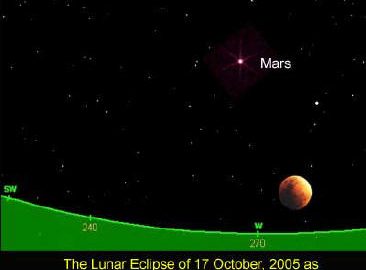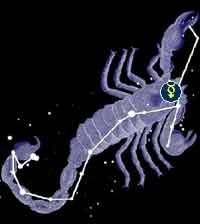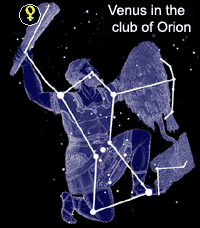Bernadette Brady
February 2006
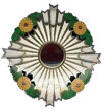
The four-year old Princess Aiko stands, unknowingly, on the edge of a new chapter in Japanese history. The Chrysanthemum Throne (emblem shown) consists of an unbroken line of descendants since 660 B.C.E. but is in “crisis” as the Japanese imperial family have not given birth to a male heir in over forty years and the Crown Prince’s only child is the little princess Aiko.
On 20th January, a bill was presented to the Japanese parliament to change the law to allow a woman to ascend to the Chrysanthemum Throne. Conservative elements see this as the end of the entire Japanese way of life, transforming the cultural place of women from being merely supporters of their husbands and nothing more than child-producers. This conservative element is so worried about the succession of the little Princess that it has been strongly and openly suggesting that the Crown Prince use concubines to produce a male heir.
Chile and Africa gain Women Leaders
At the same time, in another part of the world, other women were claiming roles of leadership. In Chile, Michelle Bachelet became her country’s first woman president and within days, in Africa, Ellen Johnson-Sirleaf was elected Liberia’s president – Africa’s first elected female leader.
Normally in this newsletter I look at the coming skies and then suggest possible future scenarios but now I would like to take these news items and let them ask a question of the sky. Is there anything in last January’s sky narrative that could be taken as an indication of this focus on women and position of leadership? Is there anything that these news events can teach us about Visual Astrology?
Venus, the lone Female Planet in the Mesopotamian system
To a sky watcher, the most notable variable in the sky, next to the phases of the moon, is probably that of the rhythm of Venus. Indeed watching the appearance and disappearance of Venus, its times of brightness and its regular shifts from a morning rising to an evening setting star, was part of the genesis of astrology. The records of these observations, known as the Venus Tablets, date from 700 B.C.E. and are themselves considered copies of observations made a thousand years earlier.
Always tied to the sun and never being able to be further then 48 degrees from the “King”, the goddess Ishtar, or the king’s princess, varies in her brightness, depending on her phase and her closeness to earth.
She can be seen for nine months at a time, either as a bright evening star visible in the west just after sunset or a glorious morning star rising just before dawn. After each nine month period she disappears for three to four days before she reappears as the opposite star (morning or evening). Furthermore Venus can become so bright that other planets or stars within her vicinity were regarded as being radiated by her light. Such Venus radiations were thought to enhance, empower or enliven the other “actors” on the stage of the sky narrative.
| Images of Venus on Assyrian seals |
| Venus (left) [Part of a seal showing Venus as Ishtar. Neo-Assyrian, 720 – 700 B.C.E] is shown with her emblem animal, the lion, a star above her head, indicating that she is a star, and weapons in her hand. This is a woman who has power to give. Venus (centre) [Seal depicting Ishtar with radiating halo] is shown with her radiating power, the ability to empower whomever she wished. Venus (right) [Cylinder seal and modern impression: Ishtar image 8th–7th century B.C.E.; Neo-Assyrian period] is shown with radiating beams coming from her shoulders. |

Venus was the lone feminine entity in the Mesopotamian sky world and she was a sign of love, as described by the priest Issar-sumu-ereswhen writing to his king around the year 660 B.C.E. about the new appearance of Venus [1]:
What is this love by which Ishtar loves the king my lord and has [sent] the very best to the king my lord! [Venus] made her [position perfect [……] she became visible quickly — [a good sign for the king] and his reign [2].
Apart from love, Venus could empower strife if she shone brightly with a difficult sky combination. The priest Nergal-etir warned his king about a radiating Venus in the constellation Orion by writing:
If the stars of Orion keep gaining radiance: an important person will become too mighty and commit evil. — Venus stands in front of Orion [3].
The Mesopotamian Venus
Venus was a strong woman who could give her support to whomever she wished, be that to promote peace and fruitfulness or the glory of battle, even against the king. She was Ishtar and her power lay in her ability to support another, rather than to take action in her own right or promote her own agenda. A radiant Venus enhanced, supported, gave her favour to and empowered another. Venus gave her colours to her “chosen knight” and although this view is now out of step with the role of women in western society and how we work with Venus in our modern charts, this does seem to be her position in Mesopotamian astrological thought.
In researching the translations of both Herman Hunger (1992) and Simo Parpola (1970), it would also appear that Venus as the Morning Rising star was considered more potent, more capable or inclined to empower a dangerous enemy and “bring wailings to the land” (Hunger 1992:31) whereas as an Evening Star she was seen as more gentle, more loving and potentially able to pacify a dangerous situation.
Now it so happens that during the middle of last January, Venus moved from being the Evening Star to the Morning Star and as she did so, in the northern hemisphere, she could, due to her distance from the ecliptic, be seen at both sun rise as well as at sun set (see image below). So Venus was, on the same day, both the Morning Star and the Evening Star [4].
This is not an unusual event, as it will reoccur approximately every eight years but it is an event that horoscopic astrology does not recognize and it could well be an emphasis on Venus within the genre of visual astrology. Indeed if you look at the image below, you can see that the chart for sunrise on 12th January (only eastern side of chart shown) indicates that Venus will rise AFTER the sun but in the sky map (from Starlight) for this same chart you can see that Venus has actually risen BEFORE the sun. Also from the sky map for sunset on that day, it can be seen that Venus will set after the sun, therefore is both the Morning Star as well as the Evening Star.
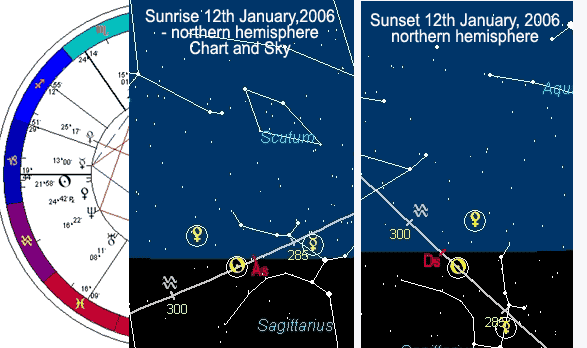
This could well be an indicator of the recent focus on women’s issues and indeed knowing this, I went back and did further research and found that the last time this happened, in 1998, was when Bill Clinton announced that he had never had sexual relationships with Monica Lewinsky!
More work is needed to explore the role of Venus in visual astrology, particularly with her emphasis on support rather than direct action but one final point can be added before ending.
With regard to the little Princess Aiko (born on 1st December, 2001 at 14.43 in Tokyo, Japan) she will probably rewrite the role of women in Japanese society by acceding to the Chrysanthemum throne, for her Venus is a Morning Rising star and her mundane stars, which are the stars which talk of how she will personally impact on the collective, contain the great royal star Regulus in paran with Venus and Saturn. Starlight gives us for the Princess Aiko:
Regulus with Venus
The role of the king, or leader, becomes of prime importance
Regulus with Saturn
To play the king
[For those readers who own Starlight, these stars and their meanings can be found by opening your own natal chart, then selecting Text/Mundane Parans. These stars and their meanings are those linked with your heliacal rising and setting stars and will give you information concerning the nature of the larger collective into which you were born and how your local acts can impact on the global scene.]
On a Personal Level
You can ask yourself some questions about your own natal Venus. Firstly, your chart will tell you if Venus was the Morning Rising star (rising before the sun on the day you were born) or the Evening Rising star (setting after the sun on the day you were born). You can then understand whether your Venus is forceful and independent or more willing to find the peaceful pathway and pour oil over troubled waters. Once you decide whether Venus is a Morning or Evening Star in your chart, then ask yourself this question: who or what in your chart does she empower, enhance or radiate? If any planets are near her, then within this Mesopotamian thinking, those planets will be empowered and given a stronger voice in your chart.
1. This could well be the earliest known example in text of the association of Venus with love.
2. Hunger, Herman. (1992). Astrological Reports to Assyrian Kings. Helsinki, Finland: Helsinki University Press. pg.16
3. (Hunger 1992:143)
4. My thanks to Martin Lewicki for pointing this out.
Reference:
Parpola, Simo(1970). Letters from Assyrian Scholars to the Kings Esarhaddon and Assurbanipal. Germany: Verlag Butzon and Bercker Kevelaer.


